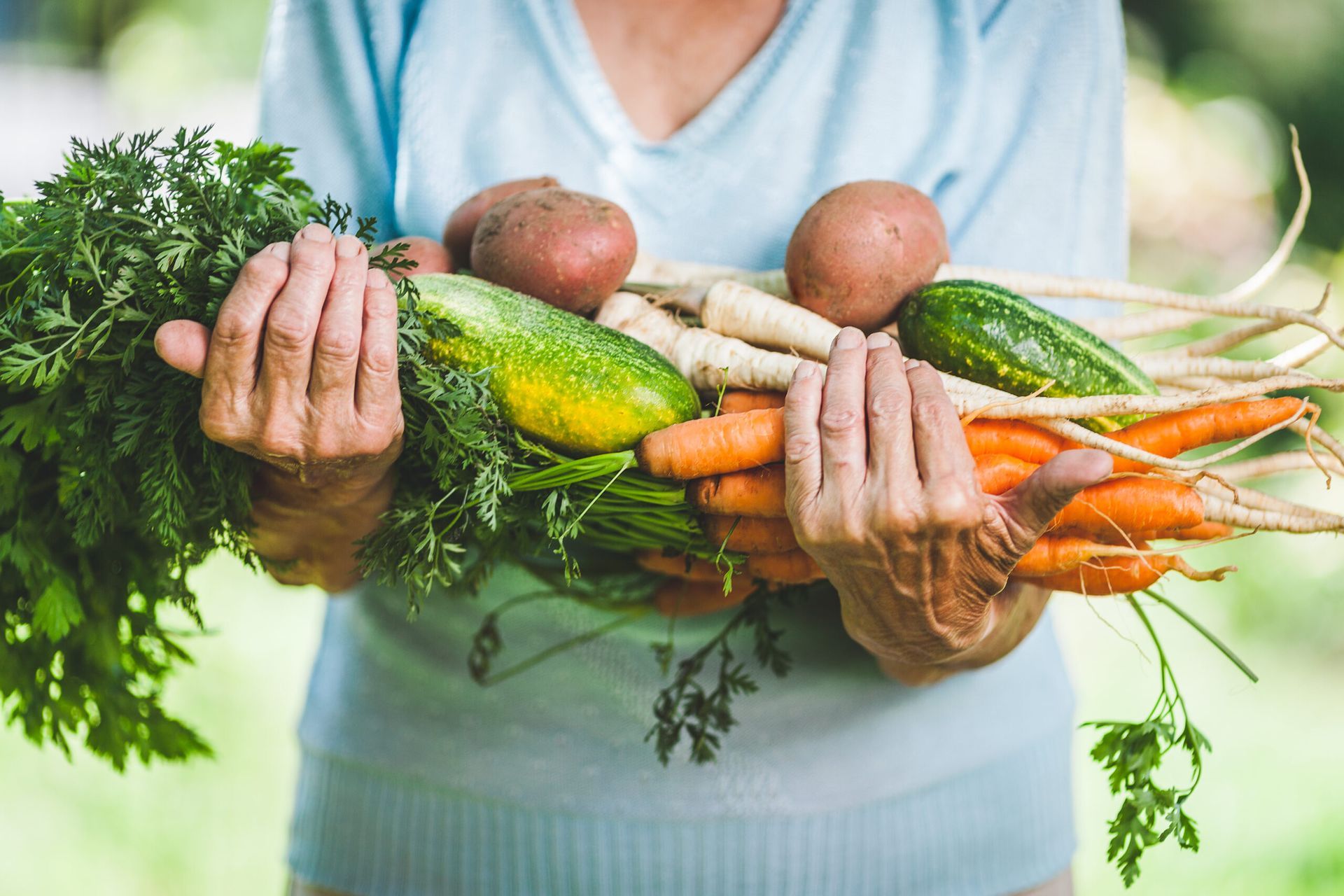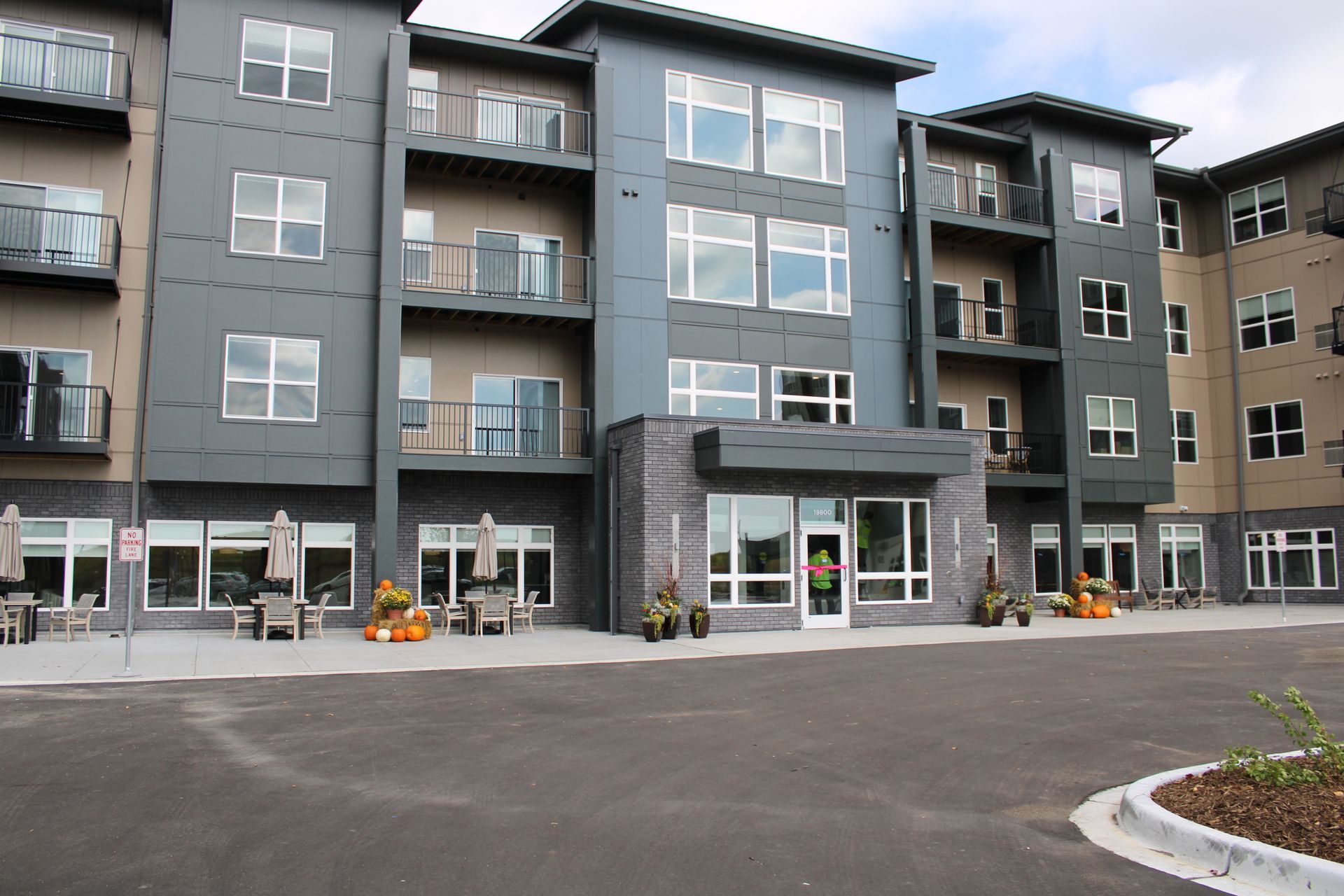
Focus on Healthy Eating Drives New Trends in Senior Dining
Most of us know, or can tell, that as we get older we need to eat differently. When we were younger, some of us could eat just about anything and everything, at any time – and feel just fine, with no uncomfortable repercussions. Sadly, the versatility of our eating habits changes over time.
The good news is that this change can push us to eat better. The “2020-2025 Dietary Guidelines for Americans[1]” states that those over age 60 should follow a healthy dietary pattern because older adults generally have lower calorie needs but similar, to even increased, nutrient needs compared to younger adults.
The guidelines encourage nutrient-dense foods and beverages including vegetables, fruits, whole grains, seafood, eggs, beans, peas, and lentils, unsalted nuts and seeds, fat-free and low-fat dairy products, and lean meats and poultry—when prepared with no or little added sugars, saturated fat, and sodium.
Local chef and food educator, Mary Ryan, a local chef and food educator that works with Saint Therese’s senior living communities, provided more specific tips at a meeting held this summer. They include:
- Blueberries – The Mayo Clinic[2] states that scientists have shown that blueberries are loaded with compounds (phytonutrients) that may help prevent chronic diseases, such as heart disease, diabetes and some cancers. They may also improve short-term memory and promote healthy aging.
- Broccoli – Good source of folate (natural form of B9), broccoli also contains phytonutrients and is an excellent source of vitamin C — an antioxidant that protects your body’s cells from damage. In addition, it’s a great excellent source of vitamin A and is linked to preserving eye health.

- Nuts – Ryan swears by a handful of walnuts. These nuts are rich in omega-3 fats and contain higher amounts of antioxidants than most other foods. Eating walnuts may improve brain health and prevent heart disease and cancer. Another option is almonds that are packed with nutrients — fiber, riboflavin, magnesium, iron and calcium.
- Sugar and Carbs – The more you can reduce sugar the better. Use substitutes like Stevia, sucralose or Splenda. Don’t use aspartame or foods with phenylamine. These compounds trick the body into wanting more sugar. Focus on enjoying sweet non-or-low-processed foods from natural sources like maple syrup, dark honey and complex carbohydrates such as whole grains over processed flours and breads. Eat sweet potatoes instead of russets.
- And More – Comfort foods elicit memory and love. Love your longevity with a good balance and variety of food, focusing on healthy proteins in smaller portions, legumes and beans and eating from the fruit and vegetable rainbow.
Other foods Ryan recommends are leafy greens, avocados, cottage cheese and bell peppers. And Lion’s Main mushrooms that contain bioactive substances that have beneficial effects on the body, especially the brain, heart and gut.
Dining Trends Change with Times Too
Maybe it’s our aging bodies shouting at us, or maybe it’s more Baby Boomers entering senior living, but independent and assisted living communities are changing their dining options as well.
Ryan and other dining experts, say people don’t want the traditional three meals a day served in a “formal” dining room. They now want:
- Dine when they want and where they want – Many seniors don’t want to have meals during set time periods but have options available any time.
- More variety and more options – Instead of eating all meals in a dining room setting, have flexible options like grab-and-go entrees (like you find in grocery stores), a café, deli and a grill.
- Focus on foods that promote wellness – Have less of the comfort food and more fresh seasonal options with a farm to table philosophy.
- Culinary event programming – These could be chef-hosted events, exhibition cooking and menu tastings.
Josh Anderson, Vice President of Ancillary Services at Saint Therese, said that in recognition of this trend, Saint Therese is currently working to improve its menu and dining programs to provide healthier options.
So, whether driven by the needs of our aging bodies, the influence of that huge cohort of Baby Boomers, or chefs, dieticians and nutritionists finally getting their wishes answered, these days are very good days for senior dining.
About
At Saint Therese, our heartfelt purpose since 1968 has been a people first approach to living well by providing senior care and services where every life we touch feels welcomed, respected, and heard. We achieve this by doing ordinary things with extraordinary love every single day. Contact us to learn more.







